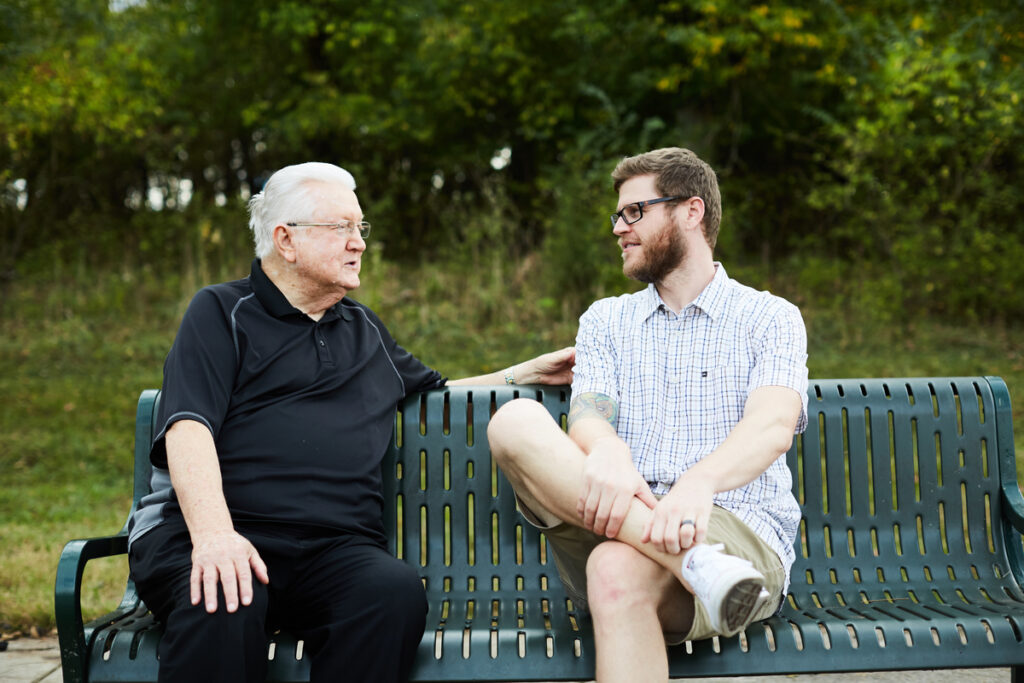Diving into James K.A. Smith’s How (Not) To Be Secular is a little bit like learning to swim in a new world of words. On the one hand, it’s sometimes hard to learn and the waters can be choppy; on the other, it’s an acquired skill that will serve you for a long, long time.
At its core, How (Not) To Be Secular is a book about a book. It’s Smith’s masterful consolidation of Charles Taylor’s near 900-page monster of a manifesto, A Secular Age. Obviously, over two hundred thousand words of highly sophisticated language is somewhere between daunting and implausible for most of us to consume. Thankfully, Smith comes to the rescue. He wants to make Taylor’s work edible. Thus, he simplifies the message of A Secular Age into an intro, five major sections, and a conclusion in just 139 pages.
To start, Smith wields the introduction as a sort of vehicle to situate the reader into the world of questions Taylor will confront. Smith argues Taylor’s book is an effective map for understanding where we are as human beings. By the end of the introduction, Smith narrows the big question that Taylor’s “map” will guide us into answering, a question many of us have been (or at least should be) asking:
“Why was it virtually impossible not to believe in God in, say, 1500 in our Western society, while in 2000 many of us find this not only easy, but even inescapable?” (19)
From here, for clarity, we receive three succinct, disparate definitions of what “secular” means. Taylor wants to run with the third definition: contestability of beliefs. To Taylor, ours is a Secular3 age. For the first time in history, every ultimate belief is contested. And for the first time in history, a way of life with no ultimate goals beyond this life is imaginable. For some, even presumed.
So, how did we get here?
Well, Taylor says, that’s a long story. Interestingly enough, Taylor thinks the best way to understand our current taken-for-granted view of the world is to tell us a story. A (hi)story.
Forewarning: it’s a challenging introduction. Smith throws out all sorts of terms you will likely have no idea how to apply. Don’t panic. He’ll explain them in detail at some point later on (and he has a glossary of terms in the back of the book).
Smith’s first chapter is titled, Reforming Belief: The Secular as Modern Accomplishment, which highlights Taylor’s powerful argument that a Secular3 age is not at all inevitable. To argue this, Taylor first wants to explain the concept of a social imaginary—or, how we imagine our social surroundings. He says we humans, who naturally believe in the divine, must be trainedto imagine the world as divine-less. You don’t just lop off the transcendent “religious” stuff and end up with secularism. It’s not just privation. It’s production of a whole new option: exclusive humanism, a worldview that somehow manages to find meaning and significance without any appeal to the divine.
Taylor emphasizes that the path to exclusive humanism is anything but straight—it’s more of a zig-zag pattern. There’s a story here, y’all.
Over the centuries, our imagined world has been increasingly enclosed, casting out our everyday contemplation of the divine. Now, in a world where the divine is less prevalent, significance must be relocated. Where does significance go? Simple: it must be placed back into this world. Into things. Into people. Into the flourishing of things and people. All of a sudden, whatever we believe about the ultimate fades in comparison to pursuing mutual benefit (54).
One of the beautiful things about Taylor’s (and Smith’s) approach is his attendance to the “feel” of our modern age. How (Not) To Be Secular shifts gears a bit in chapter three to arrest the reader with a half-explanation, half-critique of the secular atmosphere. For instance, a contestable world is fragile, its endless options make it paralyzing, and it struggles to fit everything into its small frame.
Taylor provides two striking assessments of the “modern cosmic imaginary” here: 1) the fact that for the first time folks feel they can wander between options and not choose one, escaping the war of belief, and 2) that a person’s “scientific view” of the world is shaped by storytelling, not super detailed findings that explain everything perfectly.
At this point, much of Taylor’s hi(story) is complete, and now it’s time to supply a counternarrative. While Taylor readily affirms the decline of “religion” in the West, he wants to contend that the decline is not the primary story. The primary story is the new placement of religion. In Smith’s words, “It’s not just that belief in supernatural entities becomes implausible; it’s that pursuing a way of life that values something beyond human flourishing becomes unimaginable.” (83) Isn’t that terribly accurate?
The longest and most practical chapter in the book is a roadmap for How (Not) to Live in a Secular Age. What Smith teaches us here is the subtle way secularism has defined itself not as a “take,” a belief that can appreciate other beliefs, but a “spin,” a belief that this is just the way things are. The narrative, the rhetoric, the story of secularism does not consider itself as one way of looking at the world among others—it’s the brave, mature, even inevitable way of looking at the world when one comes to their senses (literally).
We are given three primary methods to apologetics as a response to this “take” and “spin” conversation: 1) level the playing field—show others that theirs is one historically-constructed way of viewing the world, 2) find inadequacies in their account—secularist imaginaries struggle to make sense of agency, ethics, or meaning, 3) offer a Christian “take” as a better story.
Ultimately, Taylor does not aim to convince you intellectually so much as to disarm you. To unmask that silly scientific bravery story the academy has told you. To get you to take out your AirPods and listen for a moment. Maybe then you’ll hear the rumbling voice of God breathing out love.
Thus, Smith ends the book with a short chapter about conversions from secularism to Christianity.
A New Language
As with most books, the reason you should read this is the same reason that you shouldn’t. In this book, that has to do with the big words.
When I first read How (Not) To Be Secular, I felt a bit like you do when reading an old novel with a thousand names and can’t remember who’s who. There’s a world of “subtraction stories” and “CWSs” and “buffered selfs” and “immanentization” and “excarnation”—it’s a new language to learn, and if you don’t keep up with the vocab, you get left behind. However, if you want to understand how to share the Gospel in a secular world, these words are worthy of concentration, because for you this language is certainly worthy of being learned.
Smith extracts Taylor’s foremost phrases and technical language and hands them to you in an abridged format. Sure, we will not want to use most of this language when preaching, but personally, I’ve been able to simplify these words as concepts and use them multiple times in sermons with much positive feedback.
Taylor’s vocabulary words are like stairs that help us reach a higher point and receive a fuller view of our age. When you read this, you’ll find yourself with many an “aha” moment when Taylor supplies a name to something you have been feeling. Smith is absolutely right in saying that Taylor is a cartographer, handing us a map with directions in word-form for our time.
A better map makes driving easier.
A New Story
Storytelling is a stronger form of magic than rote logic. Engaging the heart is nearly always more moving than overwhelming the brain. We know this, but we don’t always have the tools for doing that well.
Taylor (through Smith’s translation) gives Christians two aids for our own storytelling: first, he gives us a new story to tell; and second, he instructs us in how to tell it.
First, in his quirky, erudite, super-intellectual sort of way, Taylor the master-storyteller compiles a history of what has brought us to our present age. Primarily, he wants us to know that a denial of the divine is not non-worship. It is simply discovering worship within a smaller framework. Christians should not bow to the assumption that you can just subtract the divine and end up with exclusive humanism—you can’t. There’s a whole lot that has to happen to get there.
When we preach the Gospel, we realize that it is generally not years of scientific observation which cause our friends or congregants to deconstruct their faith, it is rhetoric, storytelling, ethics, or even aesthetics.
A New Method
In Chapter 2, Taylor chastises the way the church has undergone apologetics for the last few centuries, alleging that we often shrink God to fit onto the playing field of other worldviews. We cannot simply prove God. God is too large to be placed nicely within our immanent proof-structures—He won’t be understood by human beings (51-53).
In other words, when we have fully satisfying answers for everything, we make ourselves God, undercutting all that we believe.
Smith points out that we can actually affirm the difficulty of belief while also maintaining that our story has the best answers for our angst, our desires, and that haunting question, “is there more?” What if, instead of trying to make God seem obvious, we spent time recognizing that in this atmosphere we’re all trying to make sense of who and what and why we are?
Maybe it’s more important to start an apologetic conversation by leveling the playing field.
It is hard to understand the entirety of this method apart from the entirety of the book. Its core is disarmament, not kill shots. For Taylor, that means dismantling intellectual (or anti-intellectual rather) assumptions of the academy. For us, that probably means something a bit different.
Overall, the practical key to Taylor’s apologetics is the trifecta mentioned in the final chapter: 1) level the playing field, 2) find inadequacies in their story, and 3) provide a better story.
Published May 13, 2024




